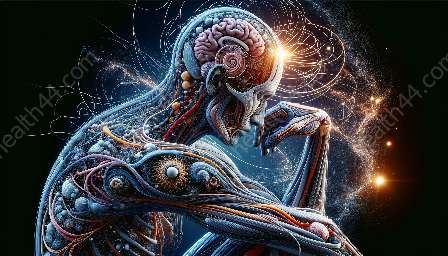Gain a comprehensive understanding of cardiovascular anatomy and its crucial role in health education and medical training. From the intricacies of the heart's structure to the complexities of the circulatory system, this topic cluster explores the wonders of cardiovascular anatomy in an engaging and informative manner.
The Heart: An Engineering Marvel
Central to the cardiovascular system, the heart is a remarkable organ that pumps blood throughout the body, ensuring the delivery of oxygen and nutrients to cells and the removal of waste products. Composed of four chambers - two atria and two ventricles - the heart works tirelessly to maintain circulation.
Anatomy of the Heart
The walls of the heart are made up of three layers: the epicardium, myocardium, and endocardium. Within these layers, a network of blood vessels, known as coronary arteries, supplies the heart muscle with oxygenated blood, enabling its continuous function.
Function of the Heart
The heart's rhythmic contractions, driven by electrical impulses, facilitate the circulation of blood through the pulmonary and systemic circuits. The pulmonary circuit transports deoxygenated blood to the lungs for oxygenation, while the systemic circuit distributes oxygenated blood to the body's tissues and organs.
Blood Vessels: Pathways of Life
Arteries, veins, and capillaries form an intricate network of blood vessels that transport blood to and from the heart, facilitating the exchange of gases, nutrients, and waste products.
Arteries and Veins
Arteries carry oxygenated blood away from the heart, branching into smaller vessels called arterioles, which further divide into microscopic capillaries. Capillaries enable the exchange of substances between the blood and surrounding tissues. The deoxygenated blood then enters venules, which converge into veins and return to the heart.
Capillary Beds
Capillary beds, found in nearly every tissue of the body, play a vital role in the exchange of substances such as oxygen, carbon dioxide, nutrients, and waste products. This exchange is essential for maintaining the body's metabolic functions and homeostasis.
Circulatory System: A Vital Transport Network
The circulatory system encompasses the heart, blood, and blood vessels, working in unison to maintain the body's internal balance and ensure the delivery of essential substances. Understanding the dynamics of circulation is fundamental in health education and medical training.
Regulation of Blood Flow
Various mechanisms, including neural and hormonal regulation, control and modulate blood flow to meet the metabolic demands of different tissues and organs. Blood pressure, cardiac output, and vascular resistance are finely regulated to optimize oxygen delivery and tissue perfusion.
Pathologies and Interventions
Cardiovascular anatomy is indispensable in understanding and addressing pathologies such as atherosclerosis, hypertension, and coronary artery disease. Effective medical training involves learning about diagnostic techniques, interventional procedures, and preventive measures to promote cardiovascular health.
Conclusion
By delving into the intricate details of cardiovascular anatomy, one can appreciate the marvels of the heart and circulatory system. This knowledge is invaluable for health education and medical training, laying the foundation for understanding cardiovascular health and disease.


